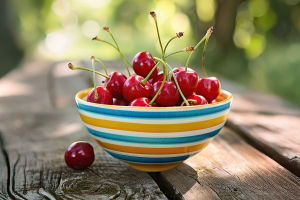Picture this: we're standing in a rocky desert where the ground is hot enough to warm our shoes, and the horizon wavers in the heat. The air is dry, the wind sharp, and life feels almost absent—until we see it.
Right there, spread across the stony ground, lies a living fossil: the Welwitschia mirabilis. From a distance, it looks like a bundle of long, curling leaves hugging the earth, but up close, it's a marvel of endurance.
Today, we're getting close enough to see every detail, every twist of this plant's centuries-old story.
A Close-Up Worth the Journey
When we crouch beside it, we notice something remarkable—the Welwitschia has only two leaves. Just two. They aren't seasonal; they have been growing nonstop since the plant's first days of life. Over the years—sometimes thousands of them—these leaves have twisted, split, and frayed under the wind, sun, and sand.
Some are so long they curl back on themselves, creating a tangled green-and-brown pattern on the desert floor. The base of the plant is thick, firm, and sturdy, gripping the rocky soil as if it has no intention of ever letting go.
Life in a Harsh Rocky Landscape
The place it calls home is unforgiving—jagged rocks, pale sand, and the endless glare of the sun. Daytime temperatures can be scorching, while nights bring a sudden, bone-chilling cold. Rain is almost unheard of, and yet the Welwitschia survives. Its secret advantage?
Fog. Coastal winds carry mist from the Atlantic Ocean inland, and the plant’s long leaves catch these tiny water droplets.
Over time, the moisture trickles down to its roots, hidden deep beneath the rocky surface. The stones themselves play a quiet role too, slowing evaporation and keeping the underground world just cool enough for survival.
The Incredible Longevity
Welwitschia mirabilis isn't just old—it's ancient. Some living plants today are estimated to be over 2,000 years old, meaning they sprouted long before many empires rose and fell. This slow pace of life is key to its survival.
Instead of racing to grow taller or bloom frequently, it conserves energy, adapts to the rhythm of the desert, and weathers decades of drought without giving up. Each line in its leaves, each curve in its shape, is like a chapter in a book written over centuries.
Why We Rarely See It
Even if we walked across miles of desert, we might never spot a Welwitschia. It grows only in a narrow stretch of southwestern Africa—mainly in Namibia and Angola—where the rare mix of desert dryness and ocean fog creates just the right environment.
Its seeds are picky about where they land; they need just enough moisture to germinate, but too much water can cause them to wither before they even start. That’s why stumbling upon a mature plant feels like discovering a secret hidden in plain sight.
What We Notice Up Close
From this close, every detail comes alive. The leaves feel thick and leathery, like they could shrug off centuries of sandstorms. The plant's cones—male and female grow separately—are small but fascinating, shaped like something from another era. The colors are a blend of dusty green, warm brown, and the pale silver of dried edges.
Around it, the desert stretches in shades of gold and gray, making its stubborn greenery stand out like a beacon of persistence.
Nature's Masterclass in Resilience
For us, the Welwitschia is more than a rare plant—it's a teacher. It thrives not by fighting the desert but by working with it. It takes advantage of the fog, anchors itself in rock, and grows at its own patient pace. It's proof that strength isn't always loud or fast—it can be quiet, steady, and deeply rooted.
Lykkers, isn't that a lesson we could all use when life feels overwhelming?
Walking Away, but Taking the Lesson
As we turn to leave, the Welwitschia stays behind, as it has for centuries, quietly gathering moisture from the morning fog and stretching its leaves toward the horizon. We may not see it again, but the image of its resilience stays with us. Lykkers, the next time we face a challenge that feels too big, let's remember this ancient plant.
Even in a world of stone, sun, and scarcity, it finds a way to live—not just for years, but for millennia. That's the kind of quiet determination we can carry with us anywhere.


